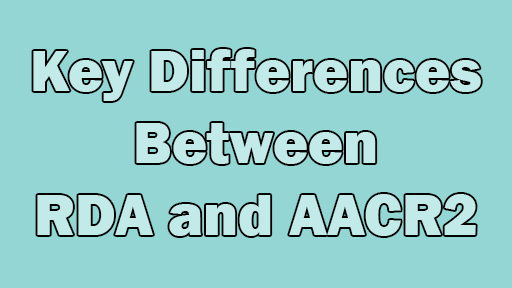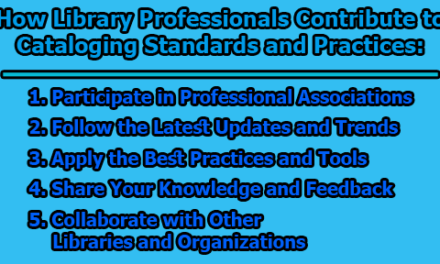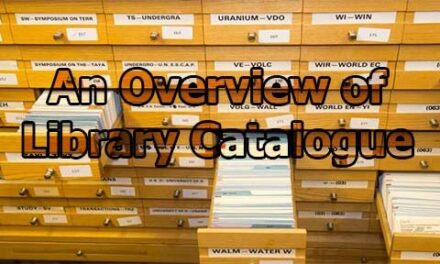Key Differences Between RDA and AACR2:
Resource Description and Access (RDA) and Anglo-American Cataloging Rules, 2nd edition (AACR2) are both standards for cataloging and describing bibliographic resources. While AACR2 has been a long-standing standard in the library and information science community, RDA represents a more recent approach to cataloging that is designed to be more flexible and accommodating to the digital age. In this comparison, we will explore the key differences between RDA and AACR2.
| Aspect | RDA | AACR2 |
| Structure | Based on FRBR (Functional Requirements for Bibliographic Records) model, emphasizing work-entity, expression, manifestation, and item. | Based on traditional cataloging principles with a focus on entry points and hierarchy. |
| Guiding Principles | Designed to be more adaptable to the digital environment and user needs, promoting user-focused and context-specific descriptions. | Primarily focused on print resources and physical formats, with an emphasis on standardization. |
| Abbreviations and Jargon | Minimizes the use of abbreviations and jargon for clarity, aiming for a more user-friendly and understandable approach. | Relies on abbreviations and library-specific terms, potentially creating barriers for non-library professionals. |
| Treatment of Multiple Manifestations | Emphasizes the description of various manifestations of a work, accommodating digital and multiple formats. | Tends to focus on a single manifestation, typically the print version, potentially neglecting other versions. |
| Relationships | Places a strong emphasis on relationships between entities, providing a more comprehensive view of bibliographic data. | Relationships are present but not as explicitly stated and emphasized, leading to a more hierarchical structure. |
| Access Points | Utilizes “access points” instead of “main entry,” providing flexibility in determining key elements for access. | Main entry is a central concept for access points, with a focus on the primary entry point for the catalog record. |
| Capitalization Rules | Allows for a more relaxed approach to capitalization, providing options for capitalizing titles and other elements. | Follows strict rules for capitalization, specifying the capitalization of titles, names, and other elements. |
| Punctuation | Provides more freedom in punctuation, aiming for clarity in the description of bibliographic elements. | Follows specific punctuation rules, ensuring consistency in catalog records. |
| Integration with Other Standards | Compatible with other modern standards like ISBD (International Standard Bibliographic Description), promoting consistency in international cataloging. | Less integrated with newer standards, potentially creating challenges in interoperability. |
| Updates and Maintenance | Designed to be more adaptable to changes, with ongoing updates and maintenance, reflecting the dynamic nature of the information environment. | AACR2 is no longer updated and considered obsolete, making it less responsive to contemporary cataloging needs. |
In conclusion, RDA and AACR2 represent different eras in cataloging standards, with RDA focusing on adaptability, digital resources, and user needs, while AACR2 has a more traditional approach suited for print formats. As libraries transition to more digital environments, RDA’s flexibility and emphasis on relationships make it a more suitable choice for modern cataloging practices. The move from AACR2 to RDA reflects the evolution of information organization in response to technological advancements and changing user expectations.

Assistant Teacher at Zinzira Pir Mohammad Pilot School and College










